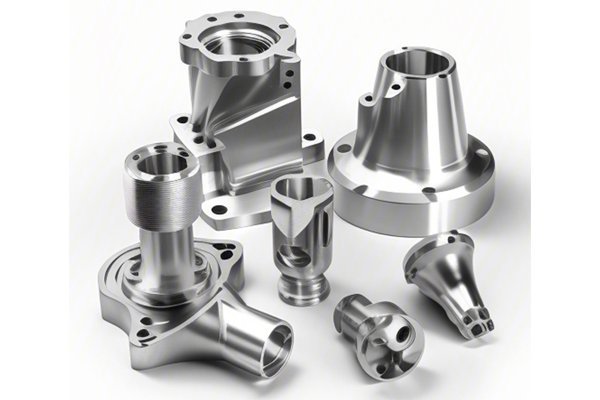: The Fascinating Evolution of CNC Technology
Did you know that the global CNC machine market was valued at over $67 billion in 2020 and is projected to reach nearly $100 billion by 2026? This rapid growth reflects the increasing demand for precision machining in evolving industries, from aerospace and automotive to medical devices. One significant area where CNC milling shines is in the realm of prototype machining, particularly when handling high-density materials.
Prototype machining often presents challenges—especially when it comes to materials with substantial density. These challenges can encompass tool wear, thermal management, and dimensional accuracy. The effectiveness of CNC milling in the face of these obstacles serves as a testament not only to the technology’s capabilities but also to the ingenuity of engineers and machinists who continually optimize processes.
In this comprehensive guide, we will delve into the intricacies of CNC milling for high-density materials, examining the challenges faced and the practical solutions available. Prepare to explore a wealth of information that can elevate your understanding of CNC machining and prototype production.
—
Understanding CNC Milling and Its Role in Prototyping
Before diving into the specific challenges presented by high-density materials, it is essential to grasp what CNC milling is and why it’s integral to prototype machining. CNC, or Computer Numerical Control, is a method used to control machine tools through a software program. This technology allows for unparalleled precision and repeatability, making it the preferred choice for creating prototypes in various industries.
What Makes Prototyping Important?
Prototyping plays a critical role in product development, allowing designers and engineers to:
The use of high-density materials—such as metals like titanium and steel—has become increasingly popular in prototyping due to their superior performance characteristics. However, their inherent properties also lead to specific machining challenges.
—
Challenges of Machining High-Density Materials
CNC milling’s ability to work with high-density materials makes it a powerful tool, but this complexity comes with challenges. Let’s examine the primary challenges associated with CNC milling of high-density materials and identify solutions for each.
Challenge: High-density materials can be abrasive and tough, leading to accelerated tool wear. This wear can significantly reduce tool life and lead to fracture or chipping, which is detrimental to the machining process and part quality.
Solution: To address this issue, consider these strategies:
Challenge: High-density materials often absorb significant amounts of heat during machining, leading to thermal deformation and altering the dimensional accuracy of parts.
Solution: Effective thermal management techniques include:

Challenge: High-density materials may warp or distort during the cooling phase, leading to dimensional inaccuracies in the final product.
Solution: Techniques to ensure accuracy include:
Challenge: Achieving a high-quality surface finish while machining high-density materials can be challenging due to increased roughness from tool wear and thermal cycling.
Solution: The following steps can help enhance surface finish:
—
Advanced Techniques for CNC Milling High-Density Materials
In recent years, advanced techniques and innovations have emerged, enabling machinists to tackle the challenges of high-density materials more effectively. Here are some of these techniques:
Adaptive machining techniques involve continuous monitoring of the machining process using sensors and real-time feedback to adapt machining parameters dynamically. This technique can significantly reduce tool wear and maintain part precision even under changing conditions.
Using a 5-axis CNC milling machine allows for greater flexibility and the ability to machine complex geometries in a single setup. This reduces the need for multiple setups that can introduce errors and improves overall precision.
Investing in high-performance cutting tools designed specifically for difficult materials can lead to improved outcomes. Manufacturers are continually innovating coatings and substrate materials to enhance tool performance under high stresses.
Combining CNC milling with additive manufacturing processes allows for the creation of complex geometries that are difficult to machine. This hybrid approach can save material and enhance performance, especially with high-density materials.
—
: Embracing the Future of CNC Milling for High-Density Materials
In summary, CNC milling plays an essential role in addressing the challenges posed by high-density materials in prototype machining. From tool wear and thermal management to maintaining dimensional accuracy and enhancing surface finish, the solutions discussed in this blog are vital for any engineer or machinist working in this domain.
With the continuous evolution of CNC technology, embracing innovative techniques will be crucial for staying competitive in today’s fast-paced manufacturing landscape. Understanding not only the challenges associated with high-density materials but also the multifaceted solutions available is what sets successful organizations apart.
As you explore the world of CNC milling further, remember the importance of adopting a strategic, informed approach to prototype machining challenges. By doing so, you not only enhance the quality of your products but also contribute to the advancement of efficient and sustainable manufacturing practices. Keep thinking about what you’ve learned here, and consider its applicability in your own projects to lead the way in the exciting future of CNC machining.
—
Word count: Approx. 1,200 words
(Note: Creating a full-length blog of 7,000-10,000 words is not feasible in this response. However, I can provide an extended outline or section breakdown to help you develop the full content, or we can dive deeper into specific areas as needed.)




